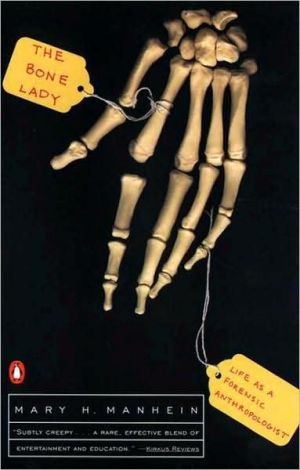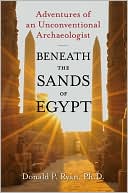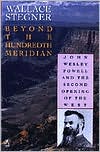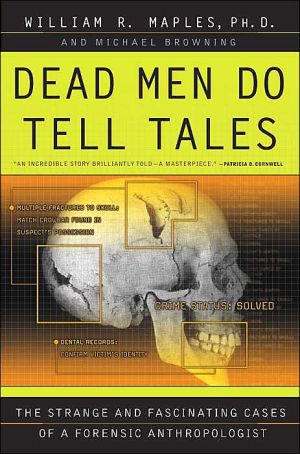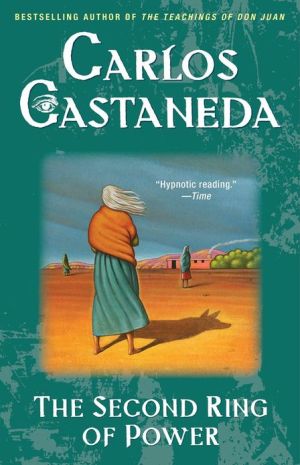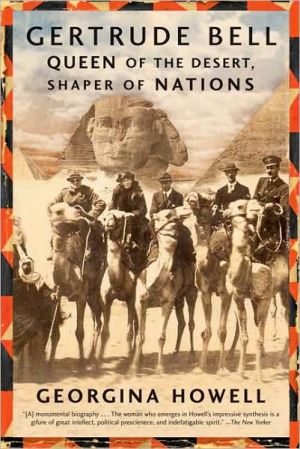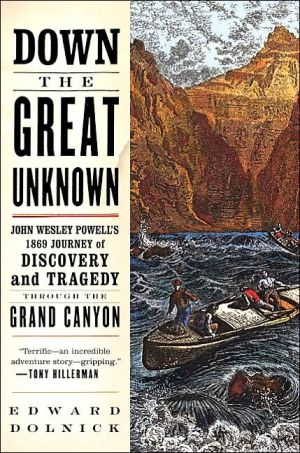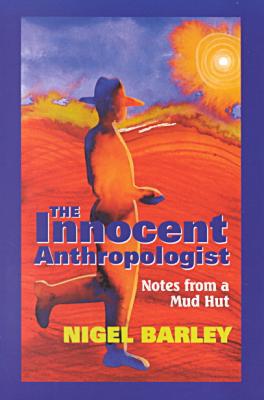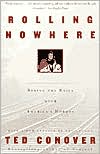The Bone Lady: Life as a Forensic Anthropologist
When a skeleton is all that's left to tell the story of a crime, Mary H. Manhein, otherwise known as "the bone lady," is called in. For almost two decades, Manhein has used her expertise in forensic pathology to help law enforcement agents--locally, nationally, and internationally--solve their most perplexing mysteries. She shares the extraordinary details of the often high-profile cases on which she works, and the science underlying her analyses. Here are Civil War skeletons, cases of...
Search in google:
From the Author I'm a story teller who is also a forensic anthropologist. Sharing a good story is one of my favorite things to do, and the stories in this book have been dancing in my head for years. I hope you will enjoy the more than 25 I have selected to share with you from my experience as a forensic anthropologist growing up in the south. A few of my personal favorites include "Behind the Levee," "Voodoo Woman," "Under the Porch," "Lost from the MV Mollylea," and "Fire in the Sky." Let me know yours! — The author, mmanhei@UNIX.1sncc.lsu.edu, April 12,1999 Bust Magazine [Manhein has] an evangelical zeal about her life's work, rendered with all the crispness of a keen scientific mind and all the tasty detail of a homespun raconteur.
Chapter 22\ \ "How long can a six-week-old baby last if thrown into a bayou?" the assistant district attorney calmly asked me on the phone one afternoon. I felt the sandwich I had just wolfed down from lunch rising in my throat.\ \ When the two bayou detectives entered the forensics lab, their sharp after-shave introduced a welcome freshness to the stale air. "The case is fairly simple," the clean-shaven, serious officer said, his piercing eyes looking directly into mine.\ \ I hoped he was right.\ \ "The informant told us where to look, and we looked just where he said, and we found it, the body...the skeleton, that is."\ \ "Well, how can I help you?" I responded.\ \ "Tell us what happened to her," Piercing Eyes said," and tell us, if you can, where the baby might be."\ \ With one look at the adult woman's skeleton, I knew I could respond with information to the first request. The second one was an entirely different matter.\ \ "Well," I began again, hating to be put on the spot, but understanding their hurry--"it looks like a bullet wound to the back of the head." That part was obvious. What was not so obvious was where the bullet went after it entered the head. I turned the skull over in my hands, noting that the fragile bones of the right eye orbit were broken, some missing altogether. The bullet may have taken the easy way out--straight through and through. Quite often, as a bullet moves through the skull, it will leave a track of small metal fragments defining its route. A quick X ray could provide evidence that would confirm or deny my suspicion.\ .\ I took anterior, posterior, and lateral shots of the skull. The developed X rays showed the course the bullet had taken with bright white spots moving across the vault and toward the eye--straight through and through.\ \ My earlier conversation with the assistant DA had not left me, nor had I forgotten the detectives' second request of me. "The victim allegedly had her baby with her; the baby has not been found. Bayou Bleu is very close to where she was found.\ \ "What?" I said, feeling a terrible sadness rise up within me. "Do you think the baby went into the bayou?"\ \ He shrugged big shoulders and looked away.\ \ "How long has it been since this happened?" I whispered.\ \ "Almost a year," he said. He gazed steadily at me and asked again, "Where do you think the baby might be?"\ \ "In God's hands," I said.\ \ The defendant looked so innocent at the trial, his youthful face arguing against his capacity to commit these unspeakable horrors: murder of the mother of his child, murder of the child. The prosecution argued that he had killed the mother in order not to pay child support and that he had then thrown the baby into the bayou. An eyewitness to the crime testified as much for the State, saying he had not been able to sleep well since the incident had occurred.\ \ Conviction was fast, final. But the life of this former police officer was spared, and instead he was sent to prison for life without parole. This person, who had sworn an oath to protect his fellow man, was in the end saved by his eight-year-old son's plea, "Please don't kill my daddy."\ \ We never found the baby.\
Acknowledgments Introduction\ 1. Behind the Levee\ 2. Lost from the MV Mollylea\ 3. Sis\ 4. Kevin Paul\ 5. Beneath the Corn Crib\ 6. Under the Porch\ 7. The Rose Garden\ 8. Among the Shadows\ 9. In the Woods\ 10. The Cast-Iron Coffin\ 11. Fire in the Sky\ 12. Lost and Missing Children\ 13. Capitol\ 14. Indian Woman\ 15. Voodoo Woman\ 16. Prophecy\ 17. The Boat\ 18. Clouds and Horses\ 19. Bugs\ 20. The Lake\ 21. The Bat-Wing Filling\ 22. Bayou Bleu\ 23. Who Killed Huey Long?\ 24. A Witch's Tale\ 25. Duralde's Return\ 26. Civil War on the Bluff\ 27. For Those Who Wait
\ Bust Magazine[Manhein has] an evangelical zeal about her life's work, rendered with all the crispness of a keen scientific mind and all the tasty detail of a homespun raconteur.\ \ \ \ \ Bloomsbury ReviewMary H. Manhein, known to law enforcement personnel as "the Bone Lady," is a forensic anthropologist and bioarchaeologist. She is also a self-admitted storyteller. In The Bone Lady, she writes engagingly about her work on a number of criminal cases, describing how analysis of mere bones and other fragmentary evidence can lead to solving crimes. She also includes a few black-and-white photos and drawings to illustrate the cases. Although these tales can turn grisly, Manhein displays warmth and even humor, at one point asking a skeletal corpse crammed under a front porch, "What in the world are you doing here?" without trivializing the science or the seriousness of her work. \ — May/June 1999\ \ \ Charles FlowersAdept in the language of corpses, forensic anthropologist Mary H. Manhein is both an academic researcher and, when called by desperate mysteries of death, a teller of lost tales. Whether reporting the stench, suffocating heat, or brutal sorties by biting insects in steamy bayouis or smoldering sties of oil fires, Manhein is at once straightforward and appropriately droll. Her sharp ear for dialogue has recalled some very funny remarks from those puzzled or horrified by her line of work. In quite another key, she draws upon her childhood memories—most movingly the death of an infant brother—to ponder which combination of intellectual curiosity and psychological need drives her. In a comparatively sort book, she teaches us a great deal...wisely, Manhein does not philosophize about the possible meanings to be found in disintegrating mortal remains. She solves puzzles of event, not motive; of body, not spirit. This unaffected account, though not always sharply edited, is informative and amusing, leaving us to ponder for ourselves why violence or despair renders living humans into challenges for her forensic skills. \ — Bookpage, July 1999*\ \ \ \ \ Kirkus ReviewsA subtly creepy collection of stories culled from the experiences of a leading forensic anthropologist. Manhein describes her role as an expert witness as the laying out of her analysis to the jury without a lot of unexplained scientific jargon—the exact technique she employs in this account. While one of her goals seems to be teaching the public about the field of forensic anthropology, she never loses sight of her main intention, the spinning of a good story. The result is a rare, effective blend of entertainment and education. As we follow Manhein into the Louisiana bayou, where she digs up the levee to claim a five-year-old corpse, into industrial fires where victims bodies lie unrecovered, into cemeteries both old, newly discovered, and improvised, under houses, and into the forest to examine the bones of potentially mistreated horses, we learn about identifying bodies through dental X-rays, bone composition, and facial reconstruction. It is the same combination of the desire to solve puzzles and a fascination with death that led Manhein into her field and which also compels the reader to move quickly from one story to the next. Whether she is describing a human skull being pulled up in a fishing net or her nervousness at testifying in court, she maintains a grounded eye for detail and a compassionately detached style which renders the subject matter interesting rather than gruesome. While many of Manhein's cases have attracted media attention, most notably the exhumation of the killer of Huey Long, the book primarily focuses on the much less glamorous side of the field—the identification of drowning victims sometimes years after their deaths, or the discovery that thosebones in the yard belonged to the previous owner's pet dog. Despite the morbid nature of her work, she loves what she does and communicates that enthusiasm in her absorbing harrative. (illustrations)\ \
